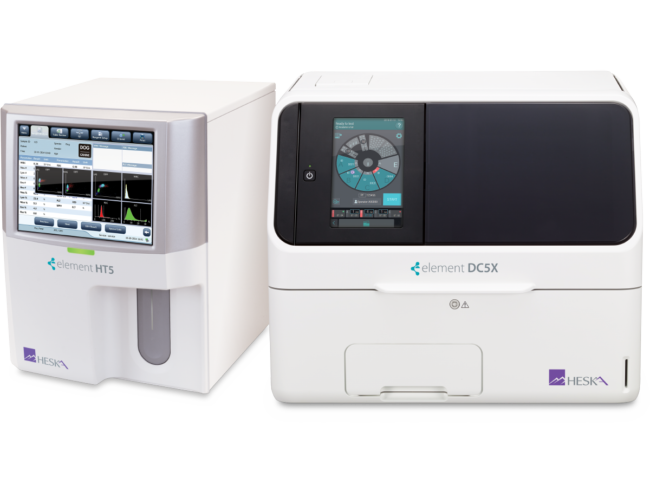More than 66% of U.S. households own pets, which accounts for 86.9 million homes.
A survey conducted by Mars Petcare revealed that pet owners spent about $1,285 annually on their pets between 2017 and 2018. Interestingly, the total rose to nearly $143.6 billion by the end of 2023. In addition, rising zoonotic diseases, an increasing number of veterinary practitioners, and growing incomes in developed economies are driving market growth.
AI-driven applications, real-time monitoring and diagnostics, and new food compositions are among the leading animal healthcare trends in 2025.
We’re compiling a comprehensive report on these trends. Fill out the form below, and you’ll be among the first to get a PDF of those insights directly in your inbox.

1. AI-based tools can diagnose animal health issues

AI-powered diagnostic tools are emerging as game-changers, promising to revolutionize how veterinarians diagnose and treat animal diseases. These tools leverage machine learning and data analytics to provide accurate, fast, and efficient diagnoses, improving animal health outcomes and transforming veterinary medicine.
How is AI transforming Animal Healthcare?
One of the important influences of AI is enabling early detection and diagnosis of diseases, leaving no room for human errors. This helps veterinarians plan treatment approaches more effectively, ensuring that animals stay healthy and well-cared for.
Prominent entities such as Royal Canin (a brand owned by Mars Inc.) have announced a collaboration with GekkoVet, a Europe-based veterinary technology company. The collaboration will focus on developing and delivering digital solutions to help veterinarians diagnose and treat diseases and manage pet care.
Idexx laboratories have developed a computer-implemented method for interpreting a diagnostic test. It involves receiving test results, initiating an automated clinical support interface, and asking the user to enter information about medication and symptoms.
Additional features include displaying test results, generating alerts for liver dysfunction, suggesting further tests, providing treatment recommendations, and tracking compliance. They have also filed a patent to safeguard this innovation.
Researchers at the University of California, Davis, are at the forefront of developing diagnostics leveraging AI to enhance animal health. In 2022, a project funded by the UC Davis Venture Catalyst Science Translation and Innovative Research (STAIRTM) grant program was launched to harness the potential of AI tools for identifying disease patterns in animals using laboratory data.
Similarly, the College of Veterinary Medicine at UF Health is making strides in advancing diagnosing through AI. With a substantial investment of $750,000 over three years, they are developing an AI-enabled digital imaging platform.
Medivel Bio has made significant progress in companion animal skin disease diagnosis using advanced AI algorithms. The technology detects various illnesses, like bacterial skin disease, fungal infection, and hypersensitivity allergic skin disease.
This system also includes a UV image classification step before the final diagnosis to improve the precision of the animal’s skin disease diagnosis.
2. New feed products that can boost animal health

Functional ingredients are specific components added to animal feed that provide additional benefits beyond basic nutrition. These ingredients can target various aspects of animal health and performance, including improved growth and development, enhanced immune function, stress reduction, and adaptability.
Examples of functional ingredients include probiotics and prebiotics, enzymes, phytogenic, nucleotides, organic acids, and functional fats.
How are functional animal feed products transforming the industry landscape?
Various feed additives, from algae to enzymes, have been explored to cater to specific animal nutrition needs and treat certain diseases.
Prominent entities such as Elanco, Purina Animal Nutrition, Hills Pet Nutrition, DSM, and Novozymes are keenly interested in developing feed composition with additives that can potentially treat diseases and provide animal nutrition.
Nutreco and BiomEdit announced a strategic research and commercial partnership to develop innovative and novel feed additives through microbiome technology.
Similarly, BASF and Cargill, two global leaders in animal nutrition, have expanded their partnership to develop and market innovative enzyme-based solutions for the animal feed industry. This expansion aims to improve animal health, reduce the environmental impact, and promote sustainable practices in animal healthcare.
DSM and Novozyme have collaborated to develop a feed product combining N-acetyl-muramidase, protease, kynurenine, tryptophan, serotonin, and tryptamine. They aim to provide health benefits such as reduced inflammation, better adaptation to circadian rhythms, improved metabolism, and reproductive health. Nestle has developed a feed composition of anti-Fei Dl antibodies to treat cat allergies. The company has filed a patent to protect this innovation.
Bloomage Bioactive’s innovative pet food formulation centers around integrating hyaluronic acid or its salts, meticulously focusing on promoting diverse aspects of pet health.
The pet food includes specific molecular weight ranges and various salts such as sodium, potassium, magnesium, etc. The recommended oral dosage varies based on intended benefits, enhancing coat quality and increasing skin moisture. Additional features may include incorporating chicken liver powder into the pet food. Applications extend to promoting coat health, intestinal health with microbiota benefits, and urinary system health, particularly in preventing or treating urolithiasis in pets.
The European Commission has incorporated the Feed Additives Regulation into the Farm to Fork action plan, labeled “Modernisation of the EU Rules on Feed Additives.” This initiative’s objective is to modernize the regulation and bring innovative feed ingredients into the market.
Innovations in Canine Type-1 Diabetes Care
3. Real-time health monitoring and wearable devices in animal healthcare

Wearable sensors in animal healthcare technology are gaining recognition in monitoring the health of companion animals and livestock. Moreover, their advent has enabled veterinary researchers to monitor animal behavior and health quantitatively.
How are wearable sensors changing animal healthcare monitoring?
With the availability of wearable devices and smart health monitoring, owners can track almost every aspect of their pet’s health. Combining AI and blockchain-enabled IoT technology has enabled veterinarians and owners to care for their animals better. These smart devices can learn about pets’ specifics, monitor their long-term health and behaviors, and detect changes. This data helps identify the impact of nutrition and exercise.
The major players in this domain are startups and small to medium-sized companies. Datamars, a pet & livestock data management company, recently acquired Kippy. Kippy is a GPS, activity, and health monitoring solution for pets.
Another startup, Linkvet, after launching the LinkVet™ pet wearable in 2021, has announced a partnership with MWI/AmerisourceBergen to distribute LinkVet™. The LinkVet™ is a collar-mounted device that tracks a pet’s activity, location, and health.
Kurt System has developed an animal training system for horses. This system has a movable carriage with sensors measuring the animals’ physiological data. It calculates the animal’s fitness and includes training features like speed control. The monitoring method involves transmitting physiological data during exercise to a remote server, allowing trainers to monitor and analyze the information.
PETMEDICS has developed a health monitor device designed for pets or livestock. It features a health sensor that captures vital information, a display for alert indications, and an evaluating module that compares the captured health data to predefined temperature thresholds. The module can then generate color-coded alerts for hypothermic, afebrile, and febrile conditions.
The system is adaptable for various pet types, offering configurable displays for historical health data and ensuring prompt identification of potential health issues through its non-contact thermometer. This innovative solution empowers pet owners with real-time, personalized insights into their animals’ well-being, enhancing early detection and care.
Pet Care Startups
4. At-home diagnostic or Point-of-care Tools in animal healthcare

At-home diagnostic or Point-of-care (POC) testing provides quick and easy veterinary test results without a traditional laboratory. These tests are often simple and can be performed by non-experts, making them ideal for use in veterinary clinics.
POC testing offers numerous benefits, including rapid results, reduced costs, improved patient care, and increased client satisfaction.
How are at-home diagnostic tools in animal healthcare a game changer?
Veterinary at-home diagnostics encompass various medical tests and devices used to diagnose animal health issues promptly and efficiently. This can include tests for various diseases, infections, and conditions like diabetes, liver dysfunction, Hookworms, and Roundworms, as well as tests to monitor the health and wellness of animals.
The scope of POC diagnostics also covers different types of animals, including livestock, companion animals, and exotic pets. These technologies streamline animal healthcare with rapid on-site testing, reducing diagnosis time and minimizing stress on animals. They are cost-effective and accurate, contributing to efficient veterinary decision-making and improving overall animal health.
Advanced Veterinary Ultrasound (AVU) has partnered with Draminski S.A., a reputable manufacturer of quality point-of-care ultrasound (POCUS). This collaboration aims to provide feature-rich systems to the veterinary sector. Through this partnership, AVU will undertake the marketing, sales, and service of Draminski’s line of portable ultrasound systems. This includes their Draminski Blue, iScan2, and iScan Mini. This collaboration highlights the growing demand for point-of-care devices in the veterinary market.
Mars, Inc. announced in June 2023 that it had completed its acquisition of Heska Corporation, a global provider of advanced veterinary diagnostic and specialty products. This will allow Mars Petcare to expand its diagnostic offerings and broadly promote point-of-care veterinary diagnostics to the global pet healthcare community.
The Inje University’s basic examination kit for companion animals is a point-of-care device designed for the preliminary diagnosis of specific diseases in pets through saliva analysis.
5. Antibody-based compositions for various treatments

This composition consists of antibody-like molecules specifically engineered to target and neutralize pathogens and abnormal cells in the animal’s body.
How is antibody-based composition changing Animal Healthcare?
Even though the domain of antibody-based treatment compositions has been explored for many years, substantial patent filings have occurred recently, and it is anticipated that this domain will continue to grow in the coming years as well.
This pattern is due to the rapid increase in new diseases, animal antibiotic resistance, and the development of cancer treatment.
Novozyme and Bactolife collaborated to develop single-domain antibodies to prevent or treat coccidiosis in poultry and reduce parasite infection risks in dogs, cats, birds, or rabbits. This invention is a solution for curbing antimicrobial resistance in animals.
Zoetis has developed antibodies and polynucleotides for treating and managing fibrosis-related disorders in canines and felines.
Vetoquinol has developed canine antibodies to treat itch and inflammatory skin conditions caused by atopic dermatitis and allergies in dogs.
Intervet has developed human nerve growth factor (NGF) antibodies for pain treatment in canines and felines.
The United States Government has developed a method to construct and produce single-domain antibodies (sdAbs) for targeting the Venezuelan equine encephalitis virus (VEEV).
These antibodies are being used to detect and provide suitable treatment upon detection. The antibodies can be immobilized, used as reporters, and combined with another suitable medicine carrier.
The Path Forward
These advanced methods will help develop personalized animal treatments and therapies based on their unique genetic makeup. By 2030, the North American region will lead the charge in farm animal healthcare, followed by Europe and Asia Pacific.
Animal health is increasingly monitored in real time, diagnoses and treatments begin earlier, surgical techniques are improving, and outcomes are rising. Aside from pets and companion animals, the rising demand for animal protein, increasing livestock population, and heightened awareness about animal health and welfare are expected to drive the market’s growth in the days ahead.
Contact us below for a more comprehensive report on a specific trend or details on this industry’s innovation map.
How Can We Help You?
We support industry-leading R&D and Innovation professionals through complex problems. Describe your challenge, and let us bring clarity and expertise.
Authored By – Suborna and Samriddh, Intelligence
Edited By – Hemanth Shenoy, Marketing












